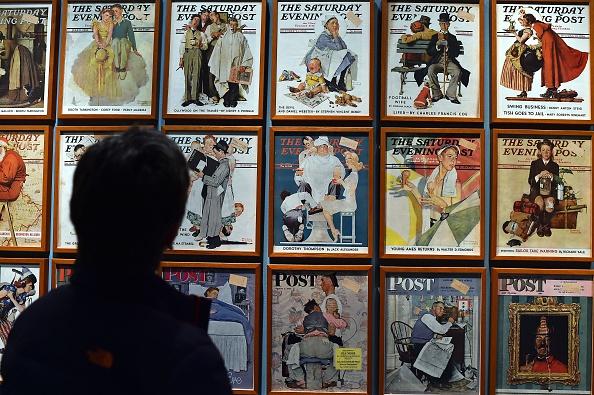During the middle of the 20th century, Norman Rockwell became America’s artist. He captured the best of what America represented: freedom, friendship, and family, these typically encapsulated with a sense of patriotism. Yes, it was Rockwell who captured all that with his artistic realism, but the depth to which he captured that reality depended heavily on the people he used as models. S.T. Haggerty, in his book “Norman Rockwell’s Models: In and Out of the Studio,” focuses on the models Rockwell used in order to make his art connect with average Americans.
Instead of professional models, Rockwell preferred regular people. His art reflected the everyday activities of everyday citizens. Who better to stand in for those moments than his neighbors, friends, and family members? This may be a known fact for many Rockwell fans and enthusiasts, but Haggerty takes readers much deeper into Rockwell’s masterpieces. He tells the story behind the paintings, but more than that, he tells the stories of those who modeled for specific pieces.

The Rockwell Models
One of those models was the young girl Ruth McLenithan, who was the girl in the humorous “Marbles Champion” painting. Haggerty tells the story of why Rockwell believed Ruth would make a great primary subject because of her red hair and freckles. When he asked her to pretend like she knew how to play marbles, she couldn’t wait to tell him that she was already a marbles champion of sorts. Haggerty’s retelling is merely the first of many heartwarming and fun stories.In these stories, Haggerty clearly expresses not only the artistic gift Rockwell possessed on the canvas, but also his gift for choosing models who could express a specific look he required.
A Wealth of Art
An addendum to Haggerty’s work discusses the worth of Rockwell’s paintings. He begins in his preface with the intrigue of the auction at Sotheby’s in New York City where “Saying Grace” was predicted to sell for $20 million. It sold for twice as much. Haggerty ends his book with the tantalizing tale of the auction of “Breaking Home Ties”—a story that indeed deserves its own book.
The author makes the obvious point that Rockwells are priceless, and to have owned one was to, over time, own a fortune. But Haggerty indicates in his book that Rockwell never saw it that way. He didn’t think that people would be willing to spend a fortune for his artwork.
The People of the Art
The creation of the art pieces and their value are significant topics in “Norman Rockwell’s Models,” but ultimately the book is about the relationship the models had with Rockwell and the paintings. Rockwell often used the same people in his works, their faces and demeanors meeting specific needs.But as much as those models filled a need for Rockwell, Rockwell filled a need for the models. A majority of them were from the small town of West Arlington, Vermont. Having their likeness placed on the cover of one of America’s most read magazines provided a great sense of value and belonging, an irreplaceable sense of importance. But it was more than a sense; it was a fact. They were re-created in art form to represent the best in the country, and often at times when the country needed reminding, such as during the eras of the Great Depression and World War II. The author succeeds in capturing all of that.
Haggerty’s work is in itself a work of art. He has, much like Rockwell, paid great attention to detail. For fans of Rockwell’s illustrations and even for those who simply wish to understand an important aspect of 20th-century America, “Norman Rockwell’s Models: In and Out of the Studio” is an important work. Furthermore, it is a very fine piece of writing.







